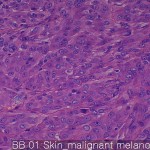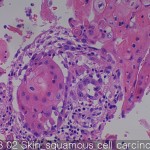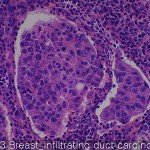| Product name | Various cancers |
| Cat. No. | BB |
| Current version | BB6 |
| Data sheet | BB6.pdf |
| No. of samples | 60 |
| No. of patients | 60 |
| Core diameter | 2.0 mm |
| Section thickness | 4 micrometer |
| Price | 244 EUR |
| 320 USD | |
| 210 GBP |
Product Related Literature
In order to determine the cause and to develop strategies for the treatment prevention, diagnosis, and treatment, cancer research is the basic research of cancer.
Range of Cancer Research, Molecular Biotechnology to conduct clinical trials to evaluate the application of cancer treatment various comparing epidemiological. These applications, treatment will include a combination of surgery, radiation therapy, chemotherapy, hormonal therapy, and immunotherapy, and radiation therapy and chemotherapy. Since the mid-1990s, the emphasis in clinical cancer research, shift towards the treatment, that is derived from the study of biotechnology, such as gene therapy and immunotherapy such.
This type of research includes (chemical carcinogen that is) such as genetics, diet, environmental factors, and a variety of fields. The the causes, with respect to a potential therapeutic target, enters the basic research beginning with data obtained from clinical observations, results were subsequently confirmed independently with convincing obtained route, more human In order to test the safety and efficacy of continuing therapeutic intervention method for clinical research, including research that has been designed properly, people. It is an important part of basic research is a characteristic function of the potential mechanism of carcinogenesis regarding types of epigenetic changes and genetic associated with the development of cancer. Mice often used as a mammalian model for the operation of the function of genes that play a role in tumorigenesis, the main aspects of tumor initiation by mutagenesis were analyzed from cultures of mammalian cells and bacteria.
There are cells of several different types is important for tumor growth. Specifically, endothelial precursor cells, is an important cell populations of tumor growth vessel. Was demonstrated in the journal and development and gene (2008) and (2007) Science impact resistance factor showed that also this finding is important for angiogenesis endothelial progenitor cells and metastasis. This importance of endothelial progenitor cells in angiogenesis and tumor growth, was confirmed by (August 2010) recent publication of cancer research. In this paper ingenious, endothelial progenitor cells, it can be labeled with an inhibitor of DNA binding 1 (ID1) was shown. This new discovery is that it also was able to monitor the endothelial progenitor cells from bone marrow into the blood of tumor stroma, researchers, it was incorporated into the tumor vasculature. This finding of endothelial progenitor cells involved in tumor vasculature, vascular development demonstrates the importance of this cell type in the configuration of the tumor. In addition, removal of endothelial progenitor cells in the bone marrow produces a significant decrease in vascular development and tumor growth. Thus, endothelial progenitor cells, is very important in a new therapeutic target of current and tumor biology.
The purpose of oncogenomics is that of identifying a tumor suppressor gene or oncogene novel capable new insights in the diagnosis of cancer for predicting the outcome of cancer, as well as providing new targets for the treatment of cancer. “The main purpose of the study cancer. Thing to identify the mutated genes that are involved in the causal carcinogenic (cancer gene)”, as described in the 2004 review article cancer genome project, cancer genome It includes being able to investigate the changes in the genome efforts won the genetic mutation from hundreds of thousands of human cancer atlas project sample is related to cancer and cancer of the document space database.
Including different types of about 350 of the tumor, the large projects of these have been identified 3000-130000 mutations in genes that are mutated in tumor. Bulk 286 was observed 33 ares oncogenes and tumor suppressor genes, genes in 319 of them.
I can genetic Several factors increase the risk of cancerous mutations comprising the activation of the inhibition of tumor suppressor genes or oncogenes. Oncology and various features of the tumor suppressor gene can be blocked at various stages of tumor development. Mutations in these genes can be used to classify the malignant tumor. In a later stage, the tumor may express resistance to the treatment of cancer. The determination of tumor suppressor genes and oncogenes, is it, to understand that the success of the treatment and progression of the tumor is important. The role of a given gene in cancer progression, depending on the type and stage of the cancer involved, it may be quite different.
Most funds for cancer research has come from charity non-profit business, and the taxpayer. In the United States, more than 30% of cancer research of all, was funded by the commercial research by pharmaceutical companies. Public spending per capita of cancer research charity and by American taxpayers, is 7 times more public spending by charities and taxpayers in the European Union (EU). As a percentage of GDP, fund cancer research non-profit in the United States, is the amount of four times devoted to cancer research in Europe. Funded by the charity half of the non-cancer research in Europe.



